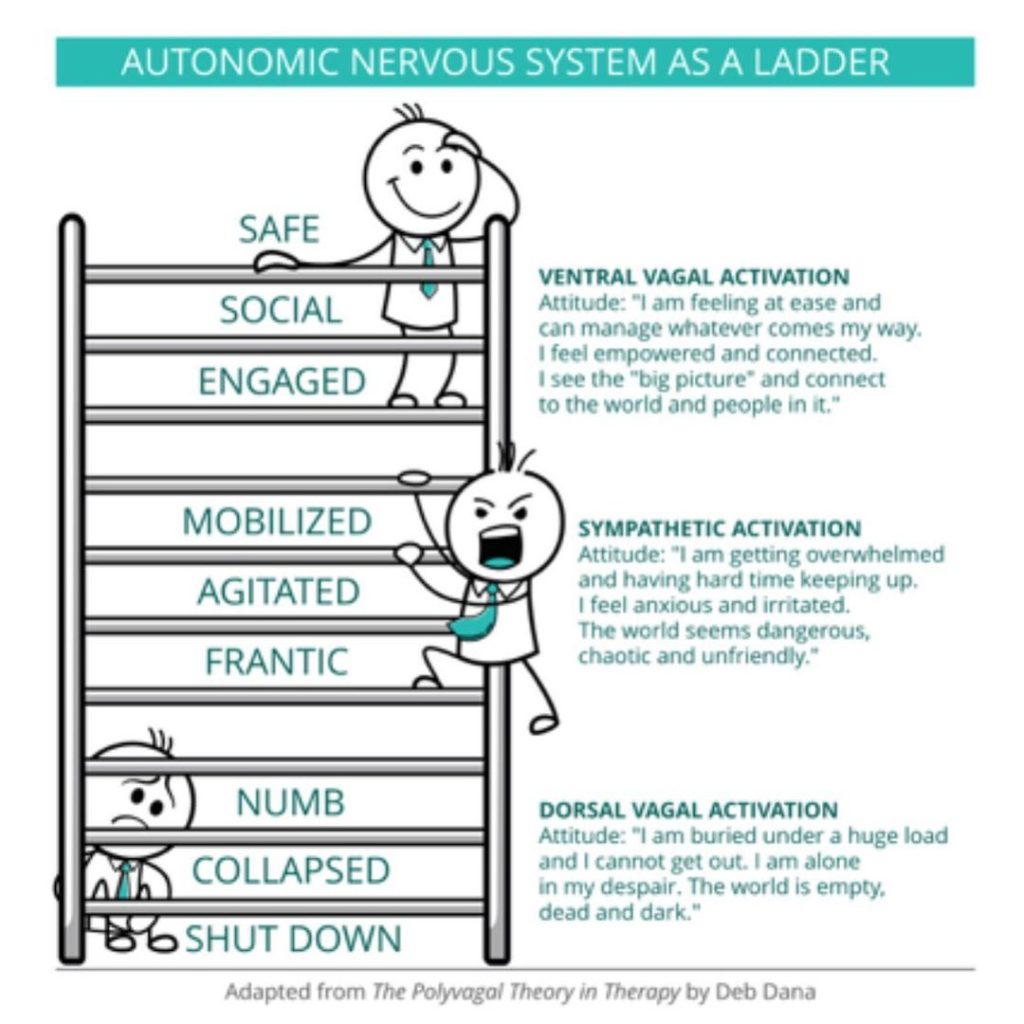Polyvagal Theory was developed by Dr Stephen Porges. The organising principles of Polyvagal Theory (PVT) are Hierarchy, Neuroception and Coregulation.
Dr. Stephen Porges’ Polyvagal Theory has revolutionised the way we view the body’s response to stress, considering the autonomic nervous system (ANS) the foundation of our lived experience.
Originally, we viewed the body’s reaction to stress as binary: we are either in a sympathetic (fight or flight) or parasympathetic (rest and digest) state. Polyvagal Theory, however, shows that there are multiple and blended states of arousal in response to real or perceived stress.
Our autonomic nervous system (ANS) subconsciously decides when we are safe or not safe, based on the information received from three streams – within our bodies, outside our bodies (environment) and between other nervous systems.
As humans, we long to be connected to others: it is a biological imperative that we are born with that develops and lasts throughout our lifetime. This third principle describes how our nervous system looks for and needs others with whom we feel safe enough to connect and with whom we can create supportive and protective relationships.
Working with horses, alongside a qualified therapist well trained in polyvagal theory and its application, can help people to understand their internal states and regulate them and practice co-regulation with other nervous systems (horses and therapist) in a safe and non-threatening environment.
Click HERE for a brief overview of PVT on YouTube.
Autonomic Nervous System


